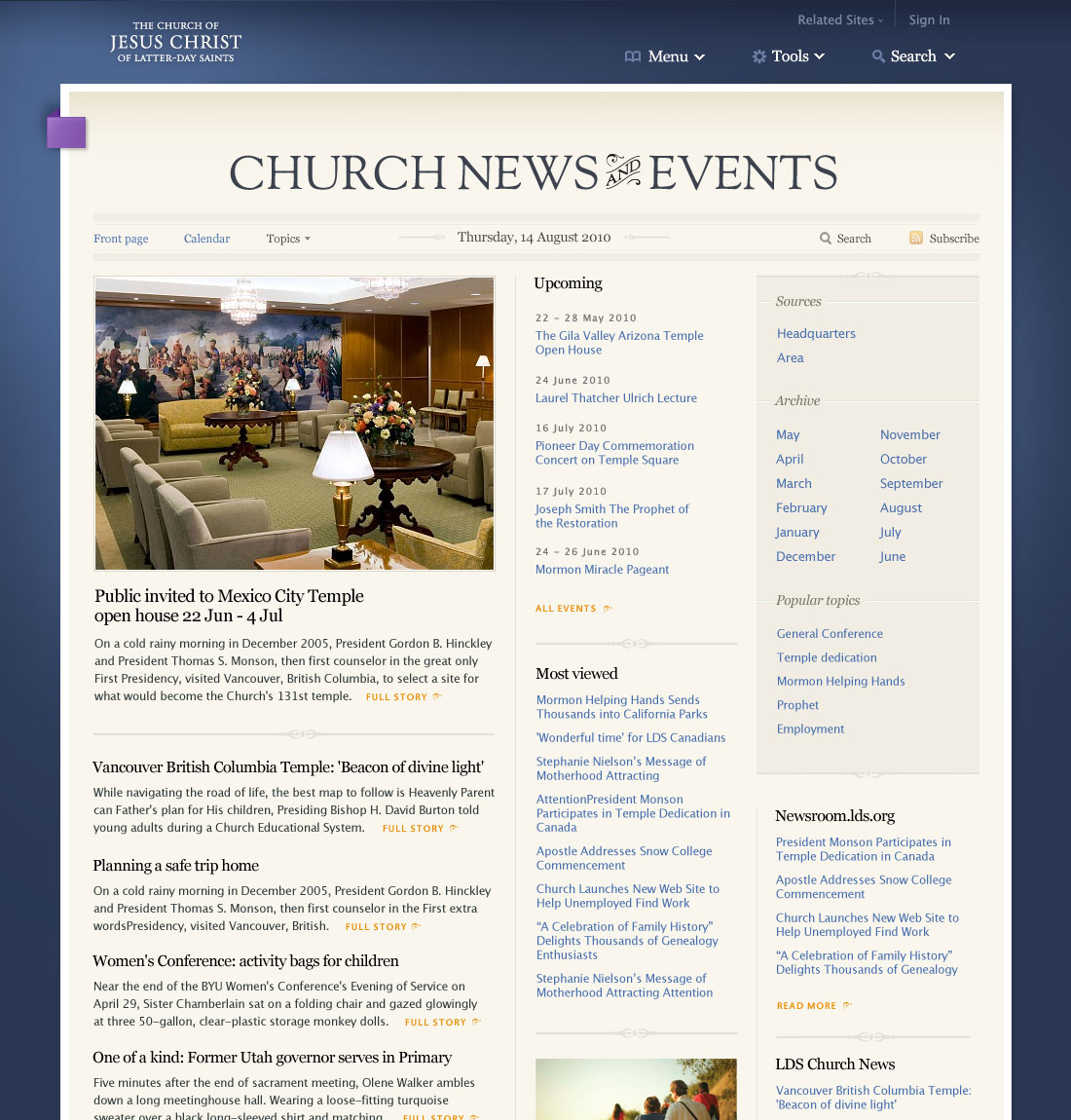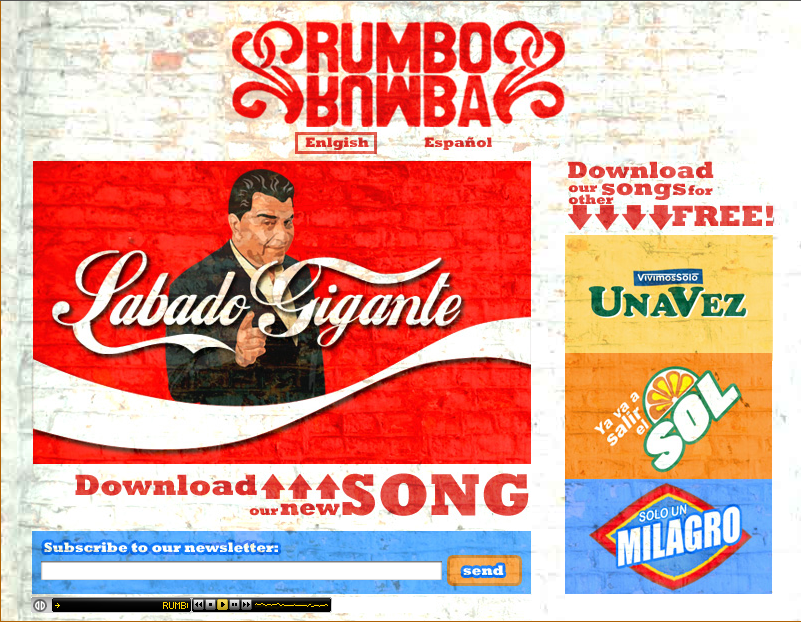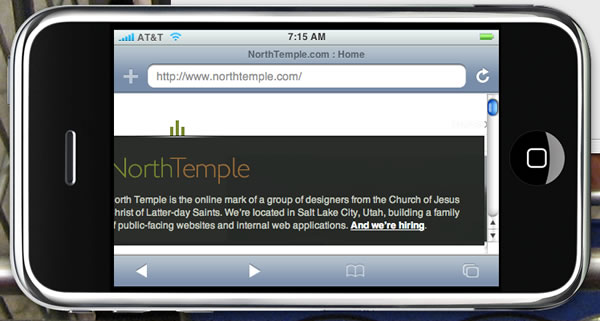web archives
case study
The Interaction Framework (IxF) is the result of a collaboration between members of the Interaction Design Team in Church’s Information and Communication Systems Department. The goal of IxF is to make development and prototyping faster, to ensure best practices in UI design and ultimately to save sacred tithing funds and make the user experience better for the folks who use our apps. We are excited to formally announce this project and introduce you to some of the work we’ve been involved in.
posted by
wade
on Thursday, Jun 24, 2010
case study
It continues to perplex me how so many basic interaction conventions did not make it onto the web. With each browser revision, we’re slowly improving experiences online, but so much of it is simply catch-up and not new innovation. Sure, it was born as a method for structuring and sharing documents, but once we started building things with it that involved interaction, why didn’t we at least start with what we knew thus far? Simple patterns designed decades earlier are slowly starting to show up on the internet but so many are still not even technologically possible.
It’s unfortunate because it limits the internet’s potential. By requiring experienced users to learn new behaviors, requiring users to deal with a sub-set of features, or lowering standards and expectations by providing new users with a sub-par experience, we are doing them a great disservice.
posted by
wade
on Wednesday, Jun 16, 2010

This is a preview of the front page of the news and events section coming in the new lds.org. It will be up on the beta site in the next few weeks. It will provide an aggregate of articles and new content being published on the site and by official Church news services.
posted by
wade
on Wednesday, Jun 16, 2010

My attempt at making a web site look like the logo-plastered walls of any corner store in Guatemala. Also my attempt at Latin Alternative Rock. Listen here.
posted by
davidlindes
on Tuesday, Feb 02, 2010
case study
Today we launched an update to the Church’s Perpetual Education Fund website. The new website features selected stories from over 40,000 individuals who have been able to better their lives through education opportunities made available to them through PEF loans.
posted by
john
on Wednesday, Jan 20, 2010
“CSS is the weakest link in the web developers toolbox. The problem goes deeper than CSS’s lack of variables. Unlike the “function” in programming, CSS has no fundamental building block.”
Chris Eppstein, the author of Compass writes up a solid argument for the need of abstraction in stylesheets. I’ve been toying around with Compass and the Sass language over the past few weeks and things look very promising.
posted by
john
on Monday, Sep 21, 2009

MacRabbit, the maker of CSSEdit, has introduced a new web development tool called Espresso. While I’m a Coda man, and many around the office here use TextMate, I’m glad to see another good option on the horizon. It certainly looks promising. (Via Pedro.)
posted by
clifton
on Friday, Sep 19, 2008
Ars Technica has an article today titled Report: Mobile Internet use has reached “critical mass”. “Using the Internet from mobile devices is a lot more popular than some of us realize, and even more surprising is the fact that the US leads the pack when it comes to mobile Internet usage… It should be noted, however, that while the US may lead in mobile Internet use, other countries lead in terms of mobile being the primary way that their population gets online. In Russia, Brazil, and India, mobile lines far outnumber landlines, and as those countries continue to flourish, they will become a greater driving force in mobile Internet use.” The article also talks about which devices are most commonly used to browse the web, and the top device is probably not what you’d guess.
posted by
cannona
on Wednesday, Jul 09, 2008
Could web accessibility become law? Many folks are trying. It will be interesting to see if this effort succeeds, and if so, which sites are covered.
posted by
cannona
on Wednesday, Jul 09, 2008
You guessed it, they make their interface accessible. If you are not able to use a mouse or see the screen, you are basically out of luck when it comes to Google Docs. The best you can do is read what others have wrote, and even that is a bit awkward.
Granted, it will not be easy for Google to substantially alter this situation with current popular techniques, but it should be made a lot simpler with the Accessible Rich Internet Applications (WAI-ARIA) standard being worked on by the The World Wide Web Consortium.
For those who are not aware, ARIA is a proposed standard which, among other things, seeks to bridge the gap in communication between the screen reader and dynamic web applications. It allows you to tell a screenreader user, for example, that a particular element on the page is a drop-down menu, add enhanced keyboard functionality, and draw the users attention to elements that change. It is a very promising standard which is already seeing some support in the latest versions of screen readers, and a few of the very recently released browsers.
But getting back to Google, I believe that inaccessibility will very likely hold them back in the market. It is true that the vast majority of users don’t even know what accessibility is, and if they do, they probably don’t pay it much attention. So how could it substantially effect them in the market? There seems to be a growing trend within a few companies, but more within government, to discourage the usage of inaccessible products when accessible alternatives exist. I believe that at least some of the efforts being put forth by companies to make their products more accessible can be directly attributed to these regulations and policies. Of course, I don’t wish to imply that it’s entirely a business decision, as I am sure many companies do it because they care. However, having a little market pressure never hurts.
Right now, Microsoft Office works great with any screenreader worth speaking of, and if you’re the person responsible for deciding what software your organization will use and you have a mandate to consider accessibility in your decision, MS Office has a big advantage that might be difficult to overcome.
Nevertheless, because of the afore mentioned market pressure, and because of Google’s promising history of making virtually all of their other web applications accessible, I am quite optimistic that I too will soon have the opportunity to use Google Docs.
posted by
cannona
on Friday, May 30, 2008
I haven’t had a chance to use it on a project yet, but this seems like a great tool to be used in conjunction with Firebug. Ahhh, the power of Javascript is simply amazing.
posted by
rick
on Thursday, Dec 20, 2007
There so many ways to resize type on the web, but I find this one not only produces excellent results, but also seems to be the least complicated of the bunch.
posted by
rick
on Tuesday, Nov 27, 2007
Looking for inspiration? Craving instruction? Bored and need something to read? Look no further; here is the Official NorthTemple Uber List of Inspirational Instructional Books, Conferences, and other stuff. Enjoy!
Conferences/Workshops
Edward Tufte
An Event Apart
Design, Usability, and Software Development Books
The Design of Everyday Things
Author: Don Norman
The Inmates are Running the Asylum
Author: Alan Cooper
Designing with Web Standards
Author: Jeffrey Zeldman
Getting Real
Author: 37Signals
Designing for Interaction: Creating Smart Applications and Clever Devices
Author: Dan Saffer
Designing Interfaces: Patterns for Effective Interaction Design
Author: Jenifer Tidwell
Designing the Obvious: A Common Sense Approach to Web Application Design
Author: Robert Hoekman Jr.
Defensive Design for the Web
Author: 37signals, Matthew Linderman, Jason Fried
Transcending CSS: The Fine Art of Web Design
Author: Andy Clarke, Molly E. Holzschlag
Bulletproof Web Design
Author: Dan Cederholm
CSS Mastery: Advanced Web Standards Solutions
Author: Andy Budd, Simon Collison, Cameron Moll
Don’t Make Me Think: A Common Sense Approach to Web Usability
Author: Steve Krug
The Elements of User Experience: User-Centered Design for the Web
Author: Jesse James Garrett
Universal Principles of Design: 100 Ways to Enhance Usability, Influence Perception, Increase Appeal, Make Better Design Decisions, and Teach Through Design
Author: William Lidwell, Kritina Holden, Jill Butler
The Elements of Typographic Style
Author: Robert Bringhurst
Business
Leadership and Self-Deception: Getting out of the Box
Author: The Arbinger Institute
Small Is The New Big
Author: Seth Godin
Religion
The Standard Works
Conference Talks
To Draw Closer to God
Author: Henry B. Eyring
The Lord’s Way
Author: Dallin H. Oaks
Temple And Cosmos
Author: Hugh Nibley
Literature
Les Miserables
The Lord of the Rings
Ender’s Series
Blogs and Magazines
Authentic Boredom
456 Berea Street
Subtraction
A List Apart
Speak Up
Brand New
Design Observer
Boxes and Arrows
UX Magazine
UX Matters
Vitamin
Core77
Get Results Blog
Signal vs. Noise
Trizle
Reference
The Elements of Typographic Style applied to the Web
John Maeda’s Laws of Simplicity
UI Garden
Professional Organizations
Interaction Design Association
AIGA
posted by
rick
on Monday, Jun 25, 2007

iPhoney is not an iPhone simulator but instead is designed for web developers who want to create 320 by 480 (or 480 by 320) websites for use with iPhone. It gives you a canvas on which to test the visual quality of your designs.
posted by
rick
on Friday, Jun 22, 2007
The reason web applications should never break the back button in the browser. For the first month of using Gmail, this was my number one gripe. I eventually got over it, but it took a concerted effort.
posted by
foster
on Tuesday, Mar 06, 2007
Nice video capturing some of the progression of the web to the Web 2.0 point at which we find ourselves. Presented by Information Aesthetics (infosthetics.com).
“A (infographical?) movie, constrained to just text & pictures, explaining Web 2.0 & how it effects affects global society.”
Take a look here: web2.0 in 5 minutes
(via Steven)
posted by
randy
on Tuesday, Feb 06, 2007
“You cannot copy the internet (nor TV programming) and expect success on mobile. The mobile is the newest mass media. It is as different as the internet was from TV, or TV was from radio. You need to understand what works.”
Tomi Ahonen, in a massive but enlightening response on Authentic Boredom
posted by
jason
on Friday, Jan 26, 2007



